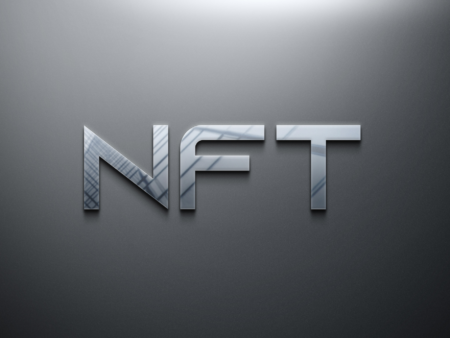Unlocking Opportunities with ERC-6551: Explore the latest protocol standard changing token issuance on the Ethereum blockchain, empowering Non-Fungible Token (NFT) designers and consumers.
The most recent information on the Ethereum blockchain is the debut of a new protocol standard for token issuance called the ERC-6551. With the help of this new standard, token designers may enhance Non-Fungible Tokens while users can benefit from previously unimaginable opportunities.
Recent information about the Ethereum blockchain
The establishment of a new standard for the issuance of tokens, notably non-fungible tokens (NFTs), is the most important news about advances in the Ethereum network.
As is now widely known, the Ethereum infrastructure enables developers to produce various kinds of cryptographic digital tokens, or “tokens,” by relying on a distributed digital ledger that boasts excellent security and an intuitive design.
These tokens adhere to a set of requirements, or “rules,” that they must meet in order to efficiently move throughout the network.
ERC-20, ERC-721, ERC-777, ERC-1155, and ERC-4626 are examples of existing standards. The first two are the most prevalent uses of these standards, and we will use them as examples to introduce the newest standard, ERC-6551.
The development of fungible (interchangeable with one another) assets like governance tokens and utility tokens is trivially possible with ERC-20, whereas NFTs, or one-of-a-kind tokens having distinctive properties, are generally created with ERC-721.
The issue with these two categories is that they are restrictive and prevent the performance of a number of acts, whereas the recently published ERC-6551 standard makes these actions feasible and broadly repeatable.
In general, the latter enhances the user experience by making all current NFTs more dynamic and engaging and by introducing more layers of ownership.
However, even though these are just JPGs (or other formats) linked to the blockchain, it has been obvious for months that the world of non-fungible tokens will change and experiment with new standards in the wake of their triumph in 2021.
We go into greater detail about the features of ERC-6551 tokens in the following section.
Ethereum news: The NFT industry will become more dynamic thanks to the ERC-6551 standard
Ethereum has recently become even more intriguing and capable of handling a huge number of requests from communities about more or less sophisticated needs as a result of the announcement of the ERC-6551 standard for non-functional tokens.
The primary objective in this situation was to increase the NFT sector’s vibrancy by introducing some highly intriguing characteristics.
The first is that ERC-6551 tokens work as genuine cryptocurrency wallets that can store assets, bringing for the first time in the history of the blockchain the notion that one asset can store another asset within it.
The “token bound account” (TBA), which was explained by Benny Giang, a co-author of the governance proposal by which this standard was adopted, was cited in an interview as follows:
It could hold onto ETH, it could hold USDC, it could hold pepe coins, it could hold other NFTs.
Technically speaking, ERC-6551s employ a permissionless registry that is ERC-721 NFT compliant and acts as a directory for TBAs. The metadata of the original ERC-721 token is inherited by the registry, which then distributes a proxy contract for TBAs.
Through a feature on the proxy contract, the assets they hold may be transferred to other TBAs.
Additionally, this new standard enables direct communication with other smart contracts on Ethereum’s numerous dApps, enabling message signing and signature verification on behalf of the token.
This is a crucial development for the Ethereum ecosystem, which will now be able to test out novel Web3 social interaction paradigms.
Another significant “milestone” in the development of NFTs’ social governance feature is actually introduced, even allowing for the application of AI to give these non-fungible tokens personalities and dynamic properties.
Once more, Giang’s description of this feature:
So now that an NFT has its own account address, it could be a signer on a multisig, it could have its own ENS sub-domain. It could participate in voting on proposals.
The Ethereum NFT market
The NFT market on Ethereum may regain the hype levels experienced in 2021 and 2022 in light of the most recent information surrounding the adoption of the ERC-6551 standard.
The network of Ethereum has served as the foundation for NFT sales of $389 million over the last 30 days, a 23% decrease from the previous month.
When contrasted to other networks like Solana, Ronin, and Flow, which do not even come close to Ethereum’s numbers, the blockchain earned $43.4 billion in sales overall.
However, since the middle of 2022, there has been a marked reduction in activity in the Ethereum NFT industry.
Looking at the trend graph of the quantity of NFT mints produced on this network, which hit multi-year lows in the beginning of 2023, demonstrates this.
Notably, since the peak years of 2021 and 2022, the average volume generated has also decreased noticeably.
This is possibly because investors tend to avoid more speculative areas like NFTs during uncertain market times and concentrate on industries that are less lucrative but have lower inherent volatility.
With the introduction of ERC-6551, we anticipate that the market for non-functional tokens on Ethereum will once again flourish, reaching sales of at least $1 billion in a month, with or without wash-trading-generated volumes.
Ethereum will keep working fearlessly to provide more entertaining and practical experiential solutions for its stakeholders even if this does not materialize.
In actuality, technological advancement cannot be halted, volumes or no volumes.












